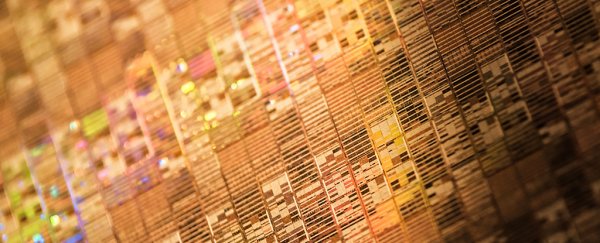For quantum computing to become fully realised, we're going to have to make a few huge scientific leaps along the way – including finding a superconductor that can act in the same way as silicon does in today's computing. A team of researchers thinks that search might now be over.
Introducing the compound uranium ditelluride (UTe2), which a new study says could be used to build logic circuits with qubits – those super-powerful quantum bits that can be in two states at once.
One of the major problems quantum physicists are currently coming up against is keeping those qubits operational and stable for long enough to do some actual computing with them. It's a thorny issue known as quantum decoherence.
What makes UTe2 stand out as a superconductor is its strong resistance to magnetic fields - resistance to the errors that could otherwise creep into quantum calculations.
"This is potentially the silicon of the quantum information age," says physicist Nick Butch, from the National Institute of Standards and Technology (NIST). "You could use uranium ditelluride to build the qubits of an efficient quantum computer."
Butch and his colleagues stumbled on the quantum-friendly properties of UTe2 while investigating a variety of uranium-based magnets. The initial thinking was that UTe2 might become magnetic at low temperatures – and while that didn't happen, the compound did become a superconductor.
Technically, uranium ditelluride is a spin triplet, rather than a spin singlet, like most other superconductors are. This means that its Cooper pairs – electrons bound together at low temperatures – can be orientated differently.
The physics can get very complex very quickly, but the important point is that these properties mean the Cooper pairs can be aligned in parallel rather than in opposition, and that in turn suggests UTe2 should retain its superconductivity in the face of external disturbances (threats to quantum coherence).
 A "whimsical illustration" highlighting the benefits of a spin triplet superconductor. (N. Hanacek/NIST)
A "whimsical illustration" highlighting the benefits of a spin triplet superconductor. (N. Hanacek/NIST)
"These parallel spin pairs could help the computer remain functional," says Butch. "It can't spontaneously crash because of quantum fluctuations."
One of the reasons why quantum computing can be a head-spinner is that there are several possible approaches to it, and scientists aren't yet sure which one is going to work best (or at all).
Using UTe2 in this way would take the topological quantum computing approach, an approach that hasn't been explored as much as other options so far: essentially, it aims to encode qubits in a type of quasiparticle that may not actually exist.
Much of topological quantum computing is still hypothetical, but its big advantage – if indeed it works – is that it wouldn't require the same level of quantum error correction just to remain coherent and stable.
That could give us logical qubits that work without the need for a lot of other qubits just for error correction. Topological quantum computing has challenges of its own, and we're still a long way from a general purpose quantum computer, but it's a step in the right direction – like many other exciting advancements we're seeing.
And the team thinks uranium ditelluride has a few more secrets to give up yet, both in regards to quantum computing and superconductors in general.
"Exploring it further might give us insight into what stabilises these parallel-spin superconductors," says Butch.
"A major goal of superconductor research is to be able to understand superconductivity well enough that we know where to look for undiscovered superconductor materials."
"Right now we can't do that. What about them is essential? We are hoping this material will tell us more."
The research has been published in Science.
